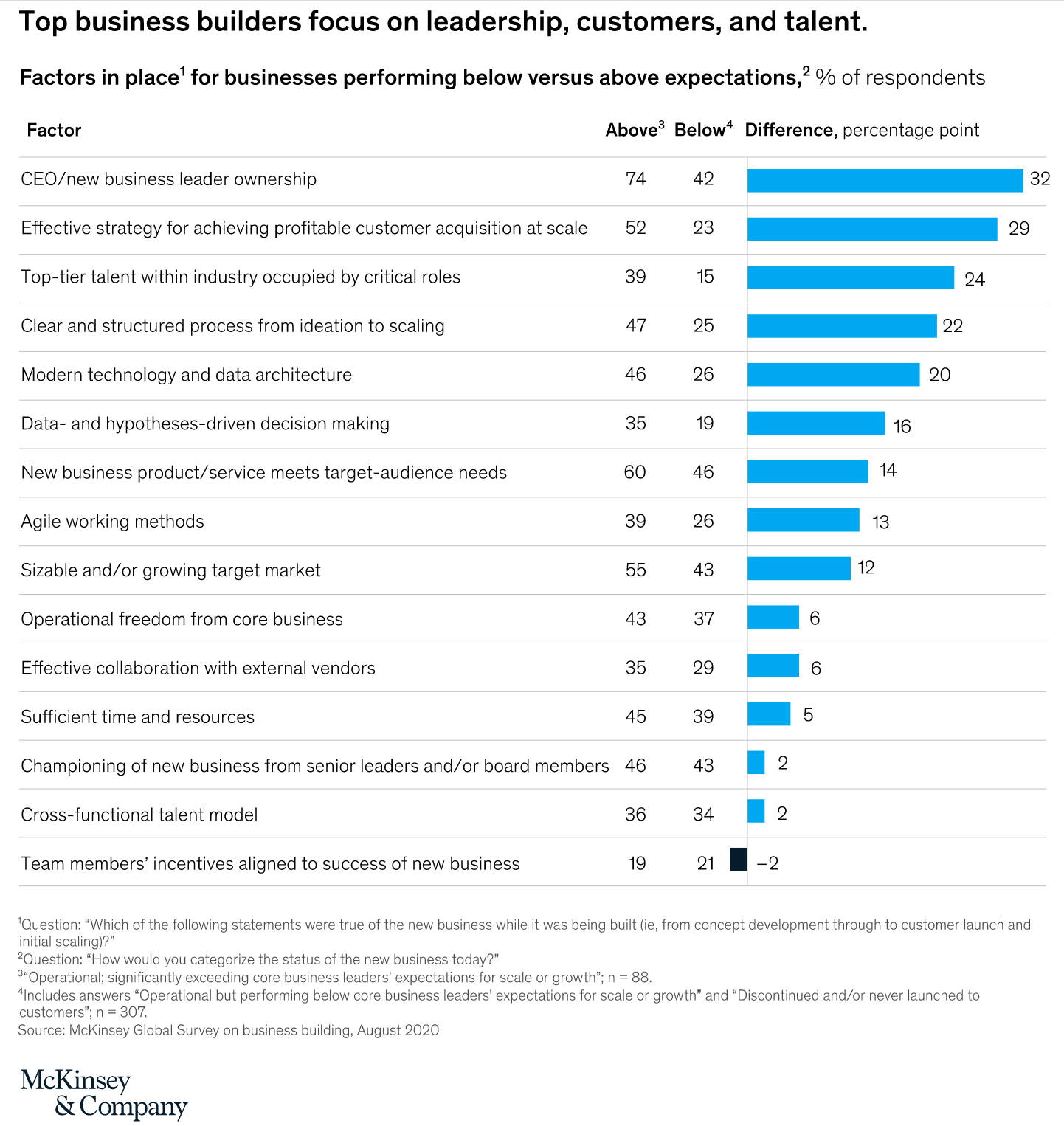Incumbent companies are launching new businesses at a greater rate than ever — whether it is BP pledging to build 5 unicorn-size businesses in 5 years or Santander launching foreign exchange company PagoFX.
Statistically speaking, the prospects for these new businesses aren’t great — only 24% of the new businesses launched in the last 10 years have grown to be viable, large-scale enterprises today. Sometimes, as in the case of RBS’s neobank Bo, they fold in just 6 months.
But a new survey by McKinsey sheds some light on how companies might be able to shift the odds in their favour a little.
McKinsey surveyed some 800 corporate executives across industries and found that around 66% of the successful new ventures were built by just 20% of the companies. What were those companies doing differently?
This was the “secret sauce” of behaviours that McKinsey was able to distil.
1. They were adaptable.
When corporate leaders were asked why a new business had failed, they most often blamed unexpected disruptions in the market. But disruption isn’t the real problem here — there are ALWAYS unexpected changes. The real problem is that businesses haven’t prepared adequately for those inevitable bumps in the road, with, for example, a cushion of cash to help tide over some difficulties.
2. They focused on acquiring customers profitably at scale.
A business that has to buy customers through unprofitable deals or a costly social media blitz that is hard to sustain isn’t going to be viable in the long term. The cost of acquiring a new customer would be half or less of their lifetime value.
3. They launched a portfolio of new businesses, not just one.
Company-building is something you can learn to be better at, so it is better to start several and keep iterating and learning from previous mistakes. This is where BP’s Launchpad strategy looks promising — and possibly why Goldman Sachs, which is taking a portfolio approach (Marcus is just the flagship of a whole fleet of companies), has seen revenues from digital consumer banking go from $2m in 2016 to $860m in 2019.
4. They staffed the new businesses properly.
Successful new businesses were much more likely to have 20 — or even 80 — employees at launch.
There are other factors as well, which you can see in summary in this chart — for some behaviour, there is a big difference in how frequently it featured with successful and unsuccessful company-builders. For others, both groups are very similar. There is more on this in detail in the McKinsey study.

Interestingly, here’s what didn’t matter:
- Whether the executive leading the initiative was hired internally or from the outside. Both successful and unsuccessful company builders hired in a similar way (about ⅔ of the time it was an internal hire). The presence of a swashbuckling external entrepreneur was not the crucial factor in success.
- Aligning staff incentives with the success of the new business. If anything, unsuccessful company builders seemed to do this more. Promising everyone a big bonus if a new venture takes off, doesn’t seem to make it any more likely to happen.


